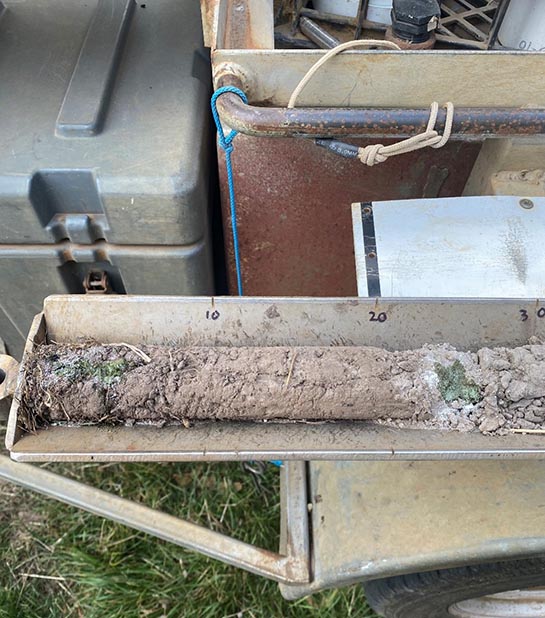BIRCHIP CROPPING GROUP
This fact sheet supports the ‘Soil sampling: Why & how’ webinar presented by Soil CRC Community of Practice participant Kate Maddern from Birchip Cropping Group (BCG). The webinar covered the benefits of soil sampling, developing a soil sampling strategy for your farm, and how to sample to ensure that your results are as accurate as possible.
Why conduct soil sampling
Soil sampling helps inform crop selection and rotation, fertiliser decisions and yield potential, and identify soil-borne diseases. It provides evidence-based decisions rather than guesses.
There are three main reasons for soil sampling: production focus (for one-year decisions), monitoring (long-term trends), and problem-solving (addressing specific issues e.g. nutrients, diseases, salinity).
Develop a soil sampling strategy
Consider your soil sampling strategy: production, monitoring, or problem-solving. Combining these approaches can provide a holistic view of your soil’s health and needs.
How to conduct soil sampling
When soil sampling, it’s crucial to sample the same management history on the same soil type. For example, if you have different soil types within a paddock, ensure you sample each soil type separately. Use electromagnetic (EM) or yield maps to assist with identifying areas of difference or similarity for sampling.
If you are problem-solving in a paddock, it’s essential to sample areas of concern, such as low-yielding zones, and compare them with higher-yielding areas to identify and address specific issues over time.
The choice of soil sampling pattern depends on various factors, including your budget, spreader capabilities, and the purpose of the sampling. Avoid headlands, old fence lines, and areas near gates for more accurate results.
When soil sampling, break it up into different depths or specific problem areas for more accurate results. Sampling depth matters, particularly when sampling for pH.
Take notes on soil types, check for underground cables and pipes, and keep nitrogen samples cool. Log GPS locations and have a sampling plan.
Key takeaways
- Know your sampling questions
- Sample the same soil type with the same history
- Ensure the sample accurately represents your paddock.

Further information
- Soil sampling methods: which strategy will work for your paddock? (BCG)
- Effective soil sampling – high and low cost options to gain soil fertility information for management (GRDC)
- Sampling soils for soil testing (Agriculture Victoria)
- FertCare – A guide for ‘fit for purpose’ soil sampling (Fertiliser Australia)
- Visualising Australasia’s Soils (VAS) (Soil CRC)
- The extent, significance and amelioration of subsurface acidity in southern New South Wales, Australia (CSIRO)
- Accurate soil sampling to 20cm in 5cm intervals (Holbrook Landcare video)
- A rapid check for subsurface acidity in the field (Holbrook Landcare video)
Acknowledgement
This fact sheet was published as part of the ‘Building technical capacity for improved soil management’ project. It was produced by the Soil CRC and jointly funded through the Australian Government’s National Landcare Program.
Posted Apr 18, 2024

